Feature
Multimedia Connected STEM Learning With Middle School Students
Connected Science Learning October-December 2018 (Volume 1, Issue 8)
By Janelle M. Johnson, Jayme Margolin-Sneider, and Monica Moreno-Martinez
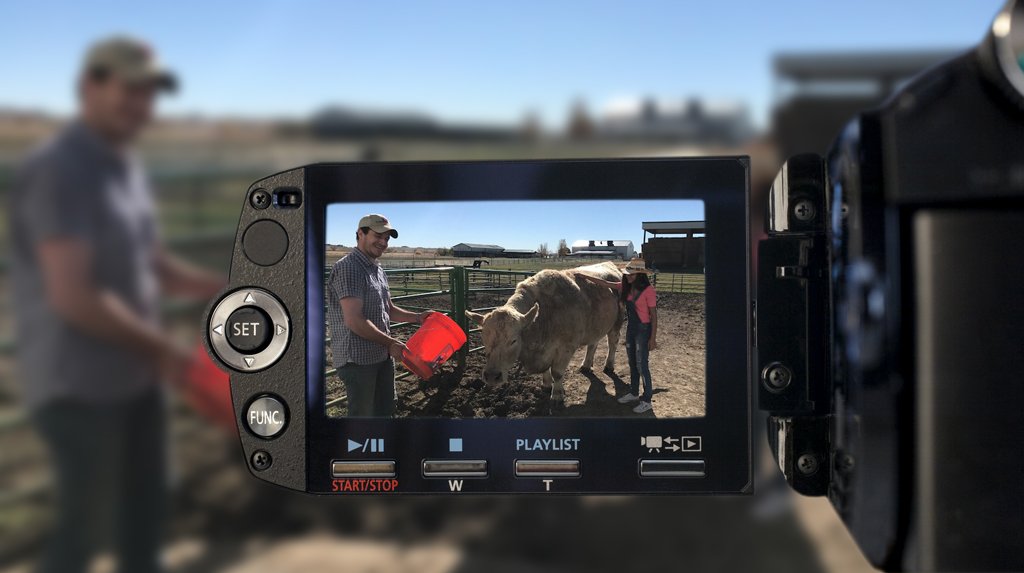
Find out how Denver middle school students practiced digital storytelling as they delved deeply into STEM topics that interested them.
Since only approximately 10% of elementary students regularly engage in hands-on science, students often reach middle school underprepared and unmotivated to pursue pathways that could lead to a career in STEM (science, technology, engineering, and math), contributing to an opportunity gap in STEM (Carroll 2014; Weinstein, Whitesell, and Leardo 2014). This is a major reason why formal education alone struggles to positively impact student learning and close gaps in achievement; other authors describe this phenomenon as underachievement relative to potential (Flores 2007; Ford and Moore 2013). To disrupt existing patterns of performance outcomes in STEM, students must be engaged in authentic ways. Persistence in STEM depends not only on academic preparedness in school but also informal learning experiences, family and peer support, and individual student characteristics (Dorsen, Carlson, and Goodyear 2006; Olszewski-Kubilius 2006). For communities underrepresented in STEM fields—students of color, girls and women, and students from low-income families—research demonstrates the importance of engagement both in and out of school in a STEM ecosystem that includes teachers, afterschool programs, and the community (Krishnamurthi et al. 2013). Participation in informal STEM learning has a stronger impact on underserved girls and women, minorities, and lower-income communities’ career paths because it both supplements and complements formal education that has a history of weeding those groups out (Weinstein, Whitesell, and Leardo 2014).
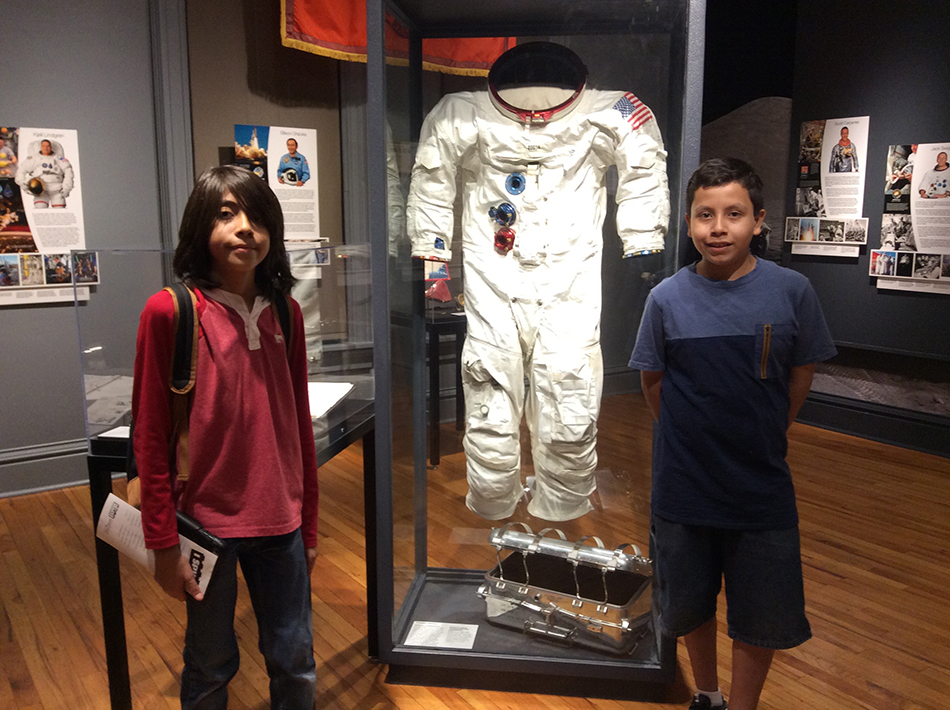
Students from underrepresented communities face the additional hurdle of limited STEM-specific career guidance, as it can be extremely challenging for students to envision themselves in a career that in many cases is unfamiliar to them or to their family (Cohen and Patterson 2012; Dorsen, Carlson, and Goodyear 2006). Student interactions with mentor scientists help to illuminate pathways to STEM careers, which has proven especially important for first-generation students (Adams, Gupta, and DeFelice 2012; DeWitt and Archer 2015). In research undertaken at the college level, Campbell and Campbell’s 1997 study quantifies the significant positive effects of mentoring on students’ GPA (2.45 vs. 2.29), course load (9.33 units per semester vs. 8.49), and lowered dropout rates (14.5% vs. 26.3%). When mentors and students connect in this way, it is an example of Ito et al.’s connected learning (2013): “Connected learning is realized when a young person is able to pursue a personal interest or passion with the support of friends and caring adults, and is in turn able to link this learning and interest to academic achievement, career success or civic engagement.” The connected learning model is based on a combination of individual interest and social supports to help students overcome adversity and successfully pursue learning pathways.
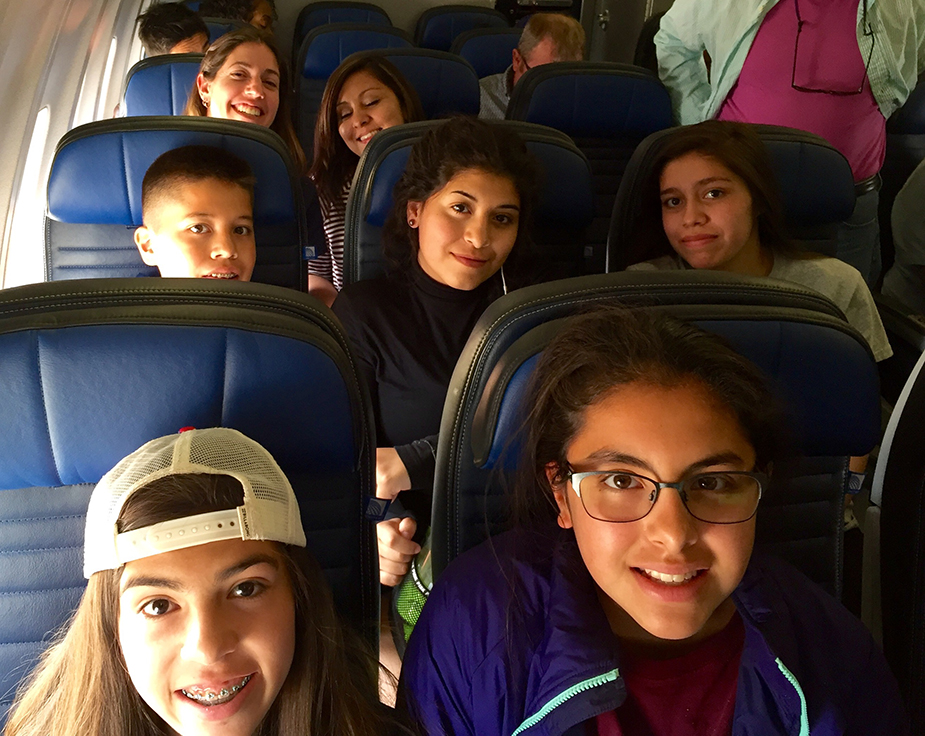
An example of connected learning in Colorado
Building awareness of career pathways and their needed skills is a priority for Colorado’s Workforce Development Council, especially through cross-sector partnerships (2017). One stellar example of such a partnership is a program called Earth Explorers (EE). EE was founded as a science, technology, engineering, arts, and mathematics (STEAM) digital storytelling program by Jenn Glaser in 2011 as a means of empowering diverse middle school students to develop greater self efficacy, designed to provide students from groups underrepresented in STEM with “opportunities to broaden the scope of their learning and to see themselves in careers and roles they never thought they could achieve.” Figure 1 expounds upon the mission of EE.
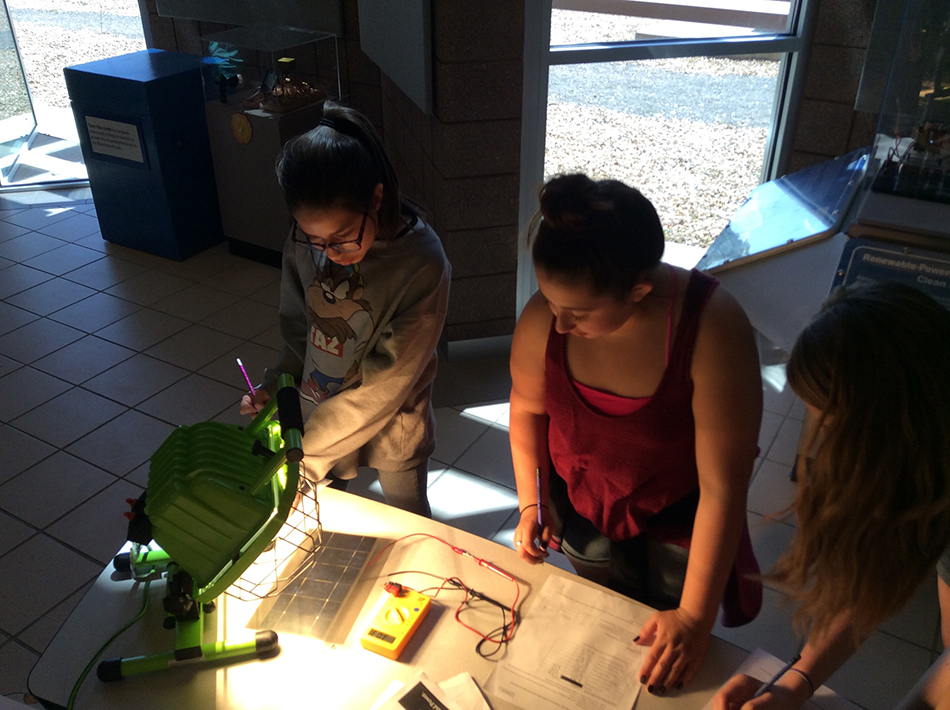
Glaser drew on media and technology favored by youth to “hook” the interest of students who are often underrepresented in STEM and connect them with scientist mentors in order to support possible career pathways. She first envisioned the project in 2008 and began to network with school and community partners. The collaboration was awarded seed funding from the Science and Cultural Facilities District (SCFD) of metro Denver in 2009. The co-created plan was then funded by a Preserve America Initiative grant. Glaser began to work on the digital storytelling curriculum with cross-sector support from University Corporation for Atmospheric Research (UCAR), National Oceanic and Atmospheric Administration (NOAA), Laboratory for Atmospheric and Space Physics (LASP), Ball Aerospace, and the Aerospace Engineering Department at the University of Colorado to help with program logistics—project reporting, planning and executing field trips, and marketing the program. Informal education specialist Carolyn Wiley served as the director of video education, and Trail Ridge science teacher and MESA (Math, Engineering, and Science Achievement) coordinator Liz Sims became the education director and curriculum developer. The MESA program provided some of the district funding for the project. The site where the videos are housed outlines the program’s aims:
Figure 1
The mission of Earth Explorers is to open doors to science and 21st-century skills by educating and mentoring underrepresented youth. We use video and new media to connect young people to deep networks of community resources.
Our students learn videography, interviewing, and storytelling. We connect them with working scientists at institutions like NCAR and NOAA. They spend three days getting to know their scientists, interviewing them and videotaping their lab and field research. They return to the video lab in their school to produce five- to eight-minute videos, which they present at a public premiere for their families, their scientists, their mentors, the school, and the community.
The pilot project paired seventh-grade students with mentors from both science and filmmaking in an afterschool program. When Trail Ridge Middle School (current student population: 57% students of color; 47% low income) in the St. Vrain Valley School District adopted the program, joined the following year by Westview Middle School (29% students of color; 26% low income), it morphed into a seventh-grade course. The course later then scaled up to a full middle school course sequence, with a sixth-grade introductory course followed by a combined seventh- and eighth-grade class to allow for more experienced students to work with newcomers. The Earth Explorers course is an elective in which students meet in class five days per week and after school at least one day per week. Between 30 and 40 students participate at each site every year. In sixth grade, student teams learn about basic research, storytelling, developing a website, and the principles of photography. Students take photos of their assigned scientist and the experiment they do with the scientist. Teams present their own animated slideshows at the end of the semester. Seventh graders learn about research, conducting interviews, digital storytelling, and fundamentals of videography. These students take several field trips during weekend and after-school sessions over the course of the semester to meet and interview scientists or engineers who work at a federal, academic, or business lab doing real-world research.
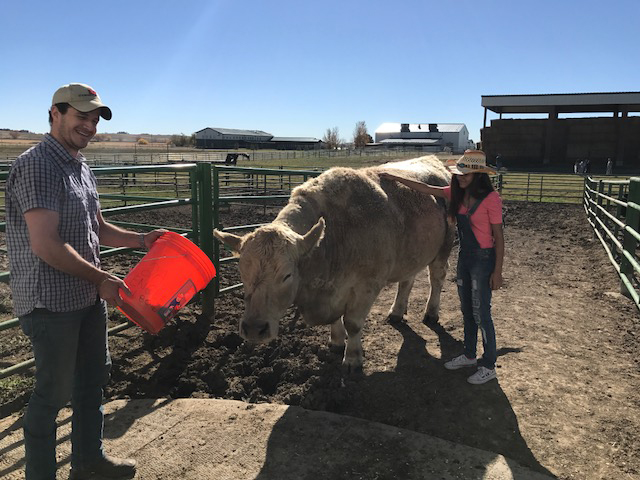
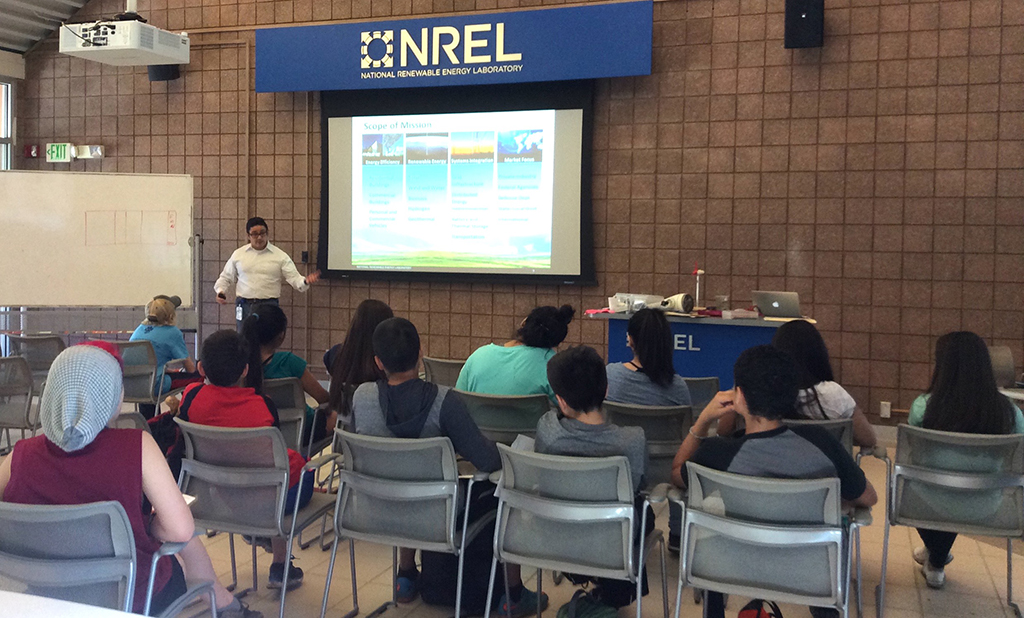
Each student team also works with a university student mentor to guide them through the process of interviewing, filming, and editing. Eighth-grade students build on their knowledge and skills from the previous years to research a STEM topic, allowing experienced students to work more independently and pursue their own interests while teachers and mentors guide their work. The background work of program mentors and their university and research institution network determines possible themes—atmospheric science or agricultural science, for example. The mixed seventh- and eighth-grade teams interview an expert in the field and produce an original movie about their topic that they share at a public video showcase.
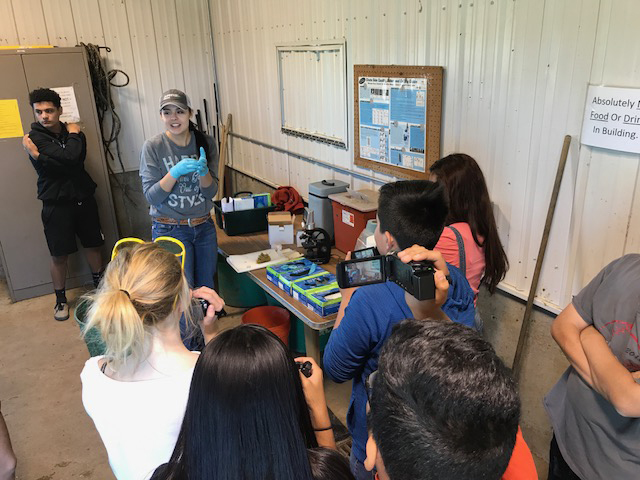
After the students are placed on a team by their teacher, they are given the instructions in Figure 2.
Figure 2
Objective:
- Be able to identify key areas of your scientist’s study area to focus your own research on
- Work independently to research individual topics to contribute to the greater understanding of the team as a whole
Essential Questions:
- Based on my research, what Important Questions do I want to ask my scientist?
- What are the key components of my scientist and his/her research?
Agenda:
- From your scientist’s bios, follow the links to do your research independently
- Take notes in a Goggle Doc to answer the two questions above
- Come together as a group and share out notes by addressing these questions:
- What was the most interesting fact you discovered?
- What was the most curious?
- What do you want to find out now?
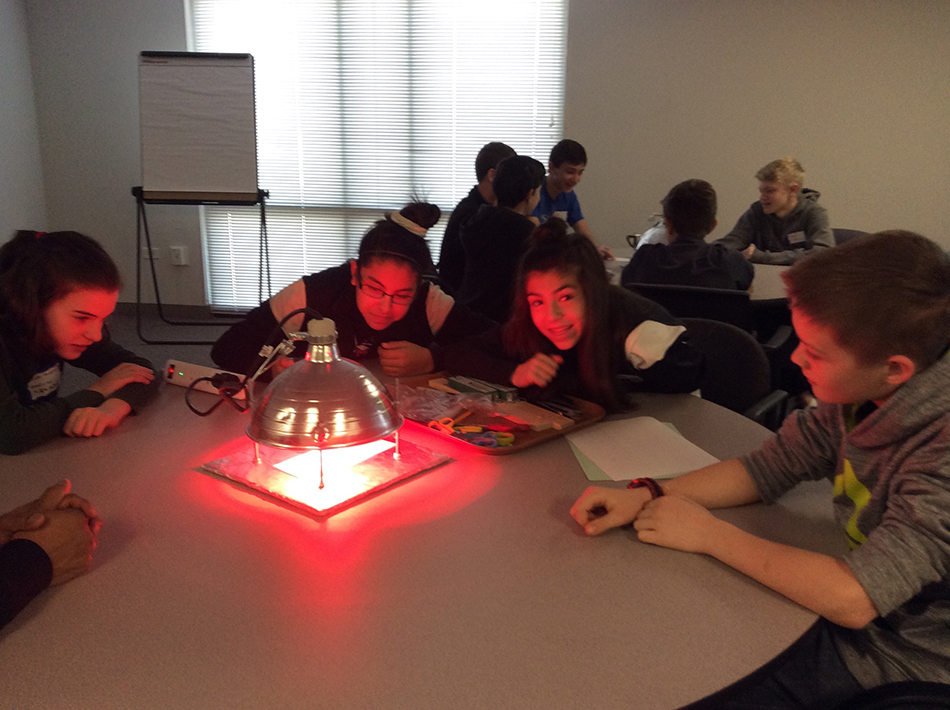
The group then travels to the university or research center to meet and interview their mentor scientist about their research, and the students generate original ideas for their storyline and how they will creatively weave the scientist’s work into the plot, which they represent by drawing a storyboard.
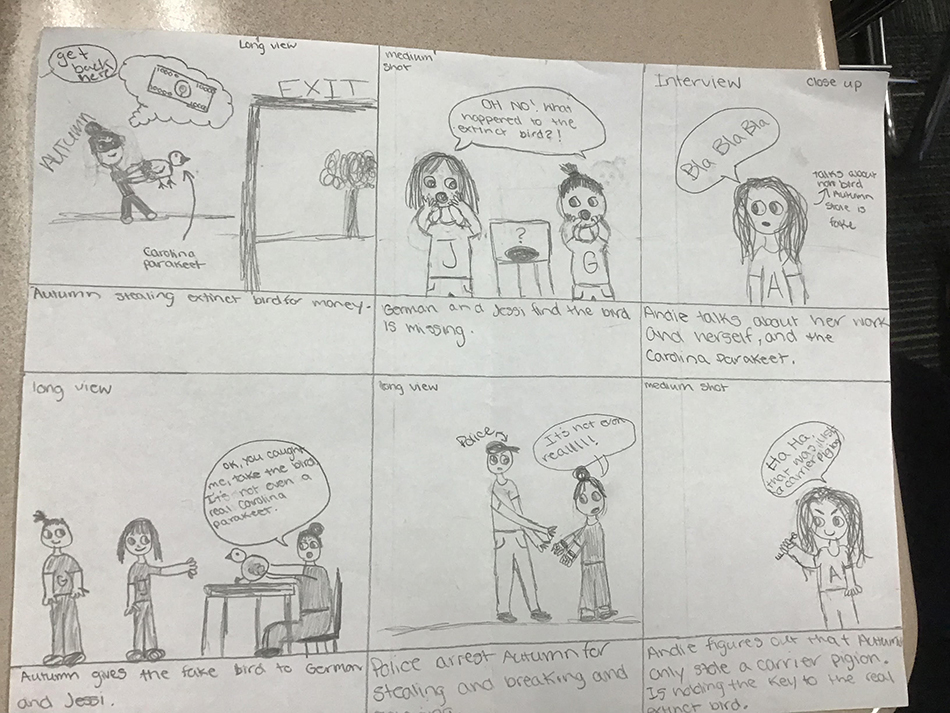
The resulting storylines consist of the original storyboard and a detailed script that includes shot angles. Many of the films are wild and fantastical, true to the vision of the student production crew—Godzilla traveling through time, for example, or cows having conversations with humans.
The teachers are present for guidance but are essentially hands-off. NCAR described participating scientists’ role in accommodating the particular nature of the project: “Involvement is greatly appreciated, even more so because the scientists have little input other than how they choose to share their work with their production crew [the middle school students]. Final videos are largely the students’ creation, including the storyline, filming, editing, and music. Consequently, a measure of trust, humor, and creativity are a prerequisite.
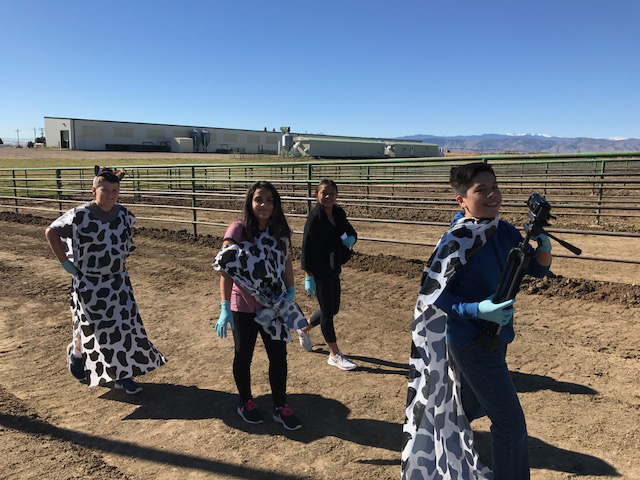
Gaining momentum
Earth Explorers steadily began to gain statewide visibility with formal and informal STEM educators across Colorado—in 2013, Denver Museum of Nature and Science featured the EE film “Attack of the Blue-Tongued Zombies” on their blog. EE was also presented to the Colorado Science Educators’ Network at a January 2014 meeting focused on science literacy, reflecting on how the project “explored ways of using science communication as a vehicle for deeper understanding of science and its relevance to students’ lives.” As of 2018, EE is operating at the two STEM-focused middle schools in St. Vrain Valley School District, Trail Ridge, and Westview. The schools have 84 total videos available to view online, including a particular behind the scenes video from 2012 that talks about the ways the project can hook the kids’ interest. The young narrator of the movie states, “First, when I got into this program, I thought I was going to meet these old, grumpy scientists. But no! They’re just humans, like us. I mean, they’re fun, they like to experience stuff. I didn’t really…expect that from them.”
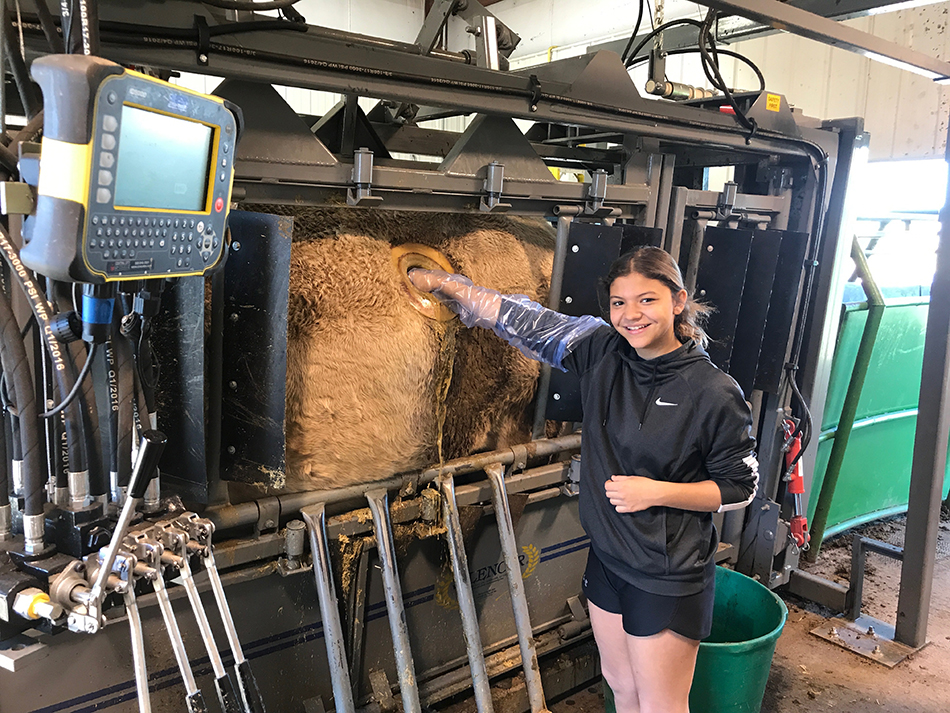
Not all program outcomes were fully positive. One student became a vegetarian after seeing the cow being used for research purposes, as she was “grossed out” and was not able to fully appreciate the experience. Aside from being “grossed out,” many STEM providers both in-school and out-of-school realms struggle with how to best engage students, especially since engagement as a sociocultural phenomenon can be difficult to measure quantitatively. The research described here is explicitly designed to reflect on and highlight a connected learning program that utilizes a strengths-based lens on students and families to address STEM opportunity gaps. Data were collected through open-ended interviews with two administrators and two teachers to understand the connected learning program’s background and structure, as well as the analysis of multiple artifacts specific to the Earth Explorers program including eight web pages, 18 middle school student-created films and speeches, and four grant reports. Data were then qualitatively coded by themes to identify key ideas. Since its inception in 2011, more than 30 students have participated in Earth Explorers at the two schools each year, totaling over 400 students served. Three major student-centered themes emerged through the data analysis: structures for support, envisioning future pathways, and developing STEM-based essential skills. These qualitative findings help illuminate outcomes that can be challenging to measure quantitatively.
Support structures
The success of any program is highly dependent on the structures in place to connect in-school and out-of-school learning. The school district in this case has been proactive in obtaining multiple STEM grants that provide additional supports to schools and programs. Voters in the district have passed mill levies that fund supports for STEM learning such as video production, robotics, and supplemental teacher pay for activities such as Science Olympiad and other after-school programs. Westview Middle School has added STEM-based clubs that meet during lunchtime and travel to events and competitions on multiple weekends. Some of the clubs overlap with STEM block classes, so the in-school and out-of-school time are directly linked. Among the school’s various programs, the Earth Explorers course is unique in the large number of field trips they take, meaning that students need to be responsible enough to make up missed school work and act respectfully and considerately in public. Students view participating in Earth Explorers as a privilege, and as a result, they share their excitement and how much they value the experience with their peers and siblings through word of mouth. This gives the program a lot of momentum and the ability to uphold high expectations for students, since students genuinely want to participate.
The level of commitment required to run the connected learning program both in and out of school means that the teachers must be passionate about the mission. Westview Principal Mark Spencer recognized the dedication of the teachers, who may be spending time away from their own families to support the students, and acknowledged that the program is “a fair amount of work for a teacher . . . but it has created some opportunities for some kids who weren’t otherwise engaged.” The students also recognized their teachers’ commitment and expressed their gratitude. Eighth-grade student Lilah thanked her teachers because they had “opened all these doors to opportunities” and “[changed her] life by opening [her] eyes to the wonders of science.” The teachers’ commitment manifested in relationships with the students that are key to ensuring high levels of student engagement in Earth Explorers.
Students envisioning future pathways
The theme of “future pathways” encapsulates several elements relayed by research participants, which speaks to the success of EE in one of its main goals: creating workforce pathways. Eighth grader Glenn was among several students who described the positive impact that the purposefully designed college visits had had on him: “My favorite part of Earth Explorers was seeing what college life was like. Last year we went to CU [University of Colorado Boulder], but this year we went to CSU, so I thought it was really cool to see the two of them and how different they both are.” The program’s first field trip to visit a college campus is intentionally designed to show what college classes, clubs, and living can be like. Many of the participating students would be the first generation in their families to attend college. Minority college students speak directly with the middle school students about their experience being the first in their family to go to college, including their struggles and successes both on their path to college and while in college.
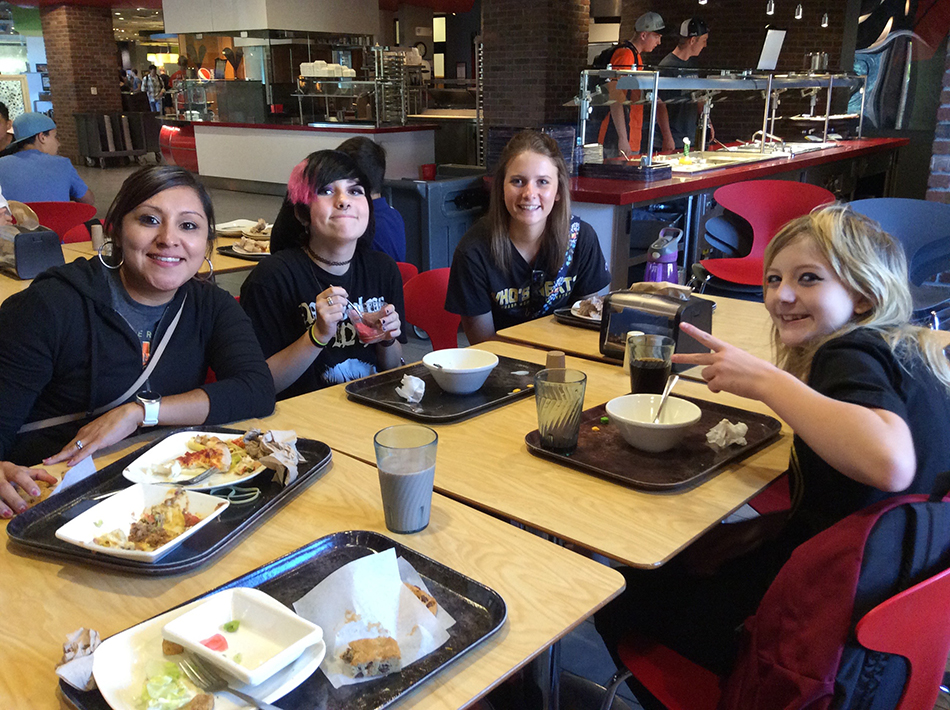
Principal Spencer echoed the students’ enthusiasm: “I love it when kids go to the college campus, and … come back and [say], ‘They’re just like me. All those people walking around are a little older me. I could do that.’” The opportunity for students to “see themselves” during engaged visits to universities is an important facet of the program’s success. There is no clear evidence of the success of this program to date; a longitudinal study is currently in progress.
Another aspect of EE that has helped the students envision future pathways in STEM was getting to know real career scientists. In their efforts to recruit mentor scientists, EE casts a wide net to be able to reach their needed target student to scientist ratio of three or four to one. This year’s Earth Explorers class at Westview has 34 students partnered with nine scientists—seven are from Anschutz Medical Center and two are from the Denver Museum of Nature and Science. Honor societies and graduate student chapters of professional organizations have been fruitful resources, since members must typically fulfill service hours. Several of the students described how their mentor scientist was one of the first scientists they had ever met aside from their teacher. Seventh grader Rachel talked about how their scientist’s enthusiasm enhanced their learning experience, in particular because his interesting background story “opened [her] eyes to different opportunities in college besides the athletics.” Rachel continued, “I hope to continue this class because it has given me opportunities, and chances to learn things not many get to learn.” Lilah from eighth grade agreed that meeting a scientist who studied in an area of interest to her had made a difference in her perceptions, emphasizing again that the program had changed her life.
Many of the students who participate in EE during middle school stay in touch with the teachers. A student getting ready to graduate from high school contacted teacher Ms. Moreno Martinez via email in May 2018 to express her gratitude. The email has been translated from the original Spanish.
I wanted to say thank you. I was accepted to the University of Colorado Boulder for astronomy. When I started [at] Westview, I didn’t know I wanted to be a scientist. Thanks to you and the STEM program, I took advantage of the opportunities for Latinas in science…I have visited NOAA, NCAR, LASP, and a real laboratory. I learned about university sciences before lots of people. Thank you for the opportunity to explore engineering and all the visits to the labs
Developing essential 21st-century skills through STEM
The connected learning context of EE helps students learn STEM content while simultaneously developing 21st-century essential skills such as collaboration and communication. The multimedia literacies of the project are a draw for several students such as eighth grader Simone, who said, “Many people say that their favorite part of Earth Explorers are the field trips, and while those are definitely wonderful to go on, my favorite part is filming and editing. Finally seeing your film slowly come together is such a special thing to see, especially when you are proud of the final product.” Fellow eighth grader Maria also named filming as her favorite part of the program. Students gain the STEM skills that are part of video production—a videographer comes into class to discuss camera angle, lighting, and film techniques, and also teaches the students some editing skills.
Regarding the essential skill of collaboration, many of the research participants discussed the unique team building that occurred as part of Earth Explorers. Teacher Jayme Sneider described a big part of EE as working not only in a team with peers, but also with adults, including learning how to ask, “Can you explain that again?” and how to write a formal email with correct grammar. Eighth grader Juan cited his greatest challenge as “getting distracted in class,” but credited his peers with helping him get back on track and focus.
Teachers intentionally form the groups by mixing grade levels and groups of three or four students who do not typically socialize, emphasizing diversity based on gender, age and grade, and ethnicity. Seventh grader Rachel was clear about the lessons she learned from the group work: “Being put with a group I know very little about, I got more experience with team projects, adjusting to different learning styles, and contributing equal amounts of work.” Another seventh grader, Liadan, said that he learned that “a real leader finds ways to include others and not just tell them what to do.”
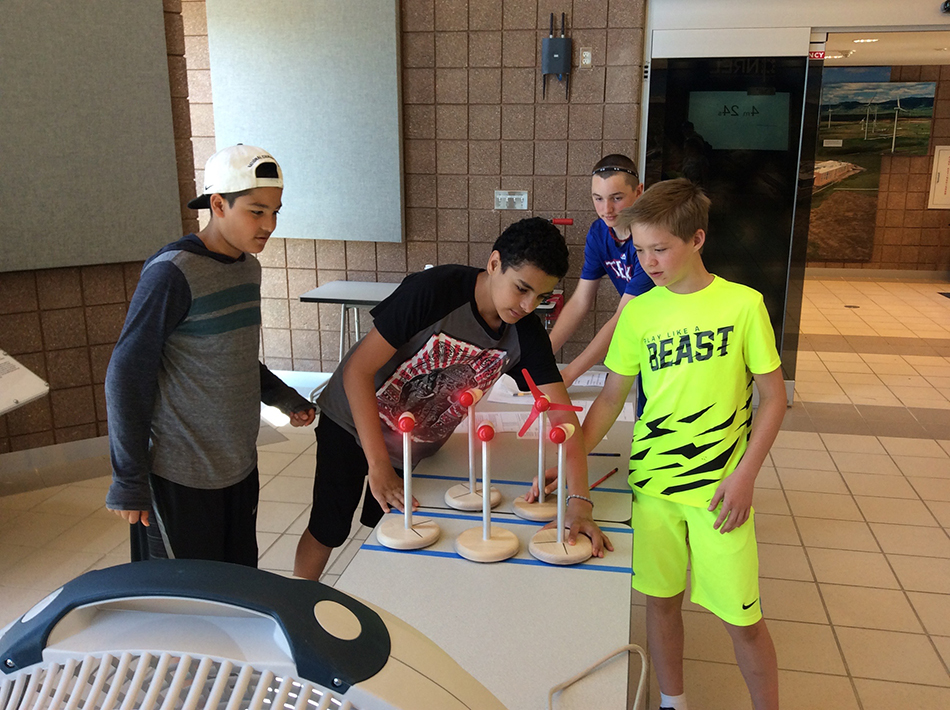
At the film premiere, students expressed how much they had enjoyed doing the work with their group while also learning the importance of collaboration. Principal Spencer expressed the socioemotional value of Earth Explorers, work that the school had emphasized in the past, but has diminished over time with the pressures of standardized testing. Many schools are recognizing the importance of socioemotional learning as key to academic achievement.
Challenges
The relatively unique mix of factors at play in this school district reduce the number of commonly encountered challenges: recruiting teachers for both the in-school and out-of-school learning, accessing funding, and supportive administration; they have extensive grant funding and a districtwide STEM focus. However, program stakeholders describe the ongoing challenge of finding enough scientists willing to spend as much time as is required to mentor the students. Based on the principle of near-peer mentoring, relatively young mentors are generally preferable since they are closer in age and therefore more relatable to the students, but that can be a tough ask for graduate students and early career scholars who are juggling multiple responsibilities. It would also be ideal to have a more diverse group of mentors, but this is made more challenging by the limited degree of faculty diversity at partnering institutions. In addition to the challenge of finding willing scientists, EE organizers also endeavor to recruit mentors from a wide variety of science fields so that students have more options. While it is beneficial in many ways for organizers to partner with specific organizations or departments, it more tightly constrains the types of scientists who are mentoring students. Previous years focused on atmospheric science, then agricultural science. Transportation issues are another major challenge because of both the cost and conflicts during the needed times of day.
From a student perspective, after-school editing sessions can conflict with sports practices and other extracurricular activities. The two schools described in this article are both STEM schools, but with very different populations. Ms. Margolin-Sneider at Westview, which is less economically, racially, and linguistically diverse than Trail Ridge, attributes the success of recruiting Latino students and cultivating family support to Ms. Moreno-Martinez. Her relationship with the families generated a new practice for the 2018–19 school year, where parents will create an account on the app Seasaw so they can see pictures right away. Collaboration and engagement with the students’ families has been an important aspect of the program. Due to the nature of EE and its extensive after-school hours, there is regular communication between teachers and families, including when families come in to pick up their kids. On the night of the film festival, the teachers meet with families and thank them for their support, and the students’ families get to see their child speaking in front of a large audience and sharing their work. Teacher Monica Moreno Martinez explains some of the extra support she offers:
I call home when needed for Spanish-speaking families. Our students are pretty good about communicating the information about our class to their parents. They feel comfortable with me, so they call with questions about things unrelated to EE. Additionally, I email parents about important dates, reminders, and I send pictures from our field trips. We also keep in mind that parents may not have internet access [or] email so this is another reason I will call home. Also, if we know a family is having a difficult time financially (or family issues), we don’t charge the student for field trips.
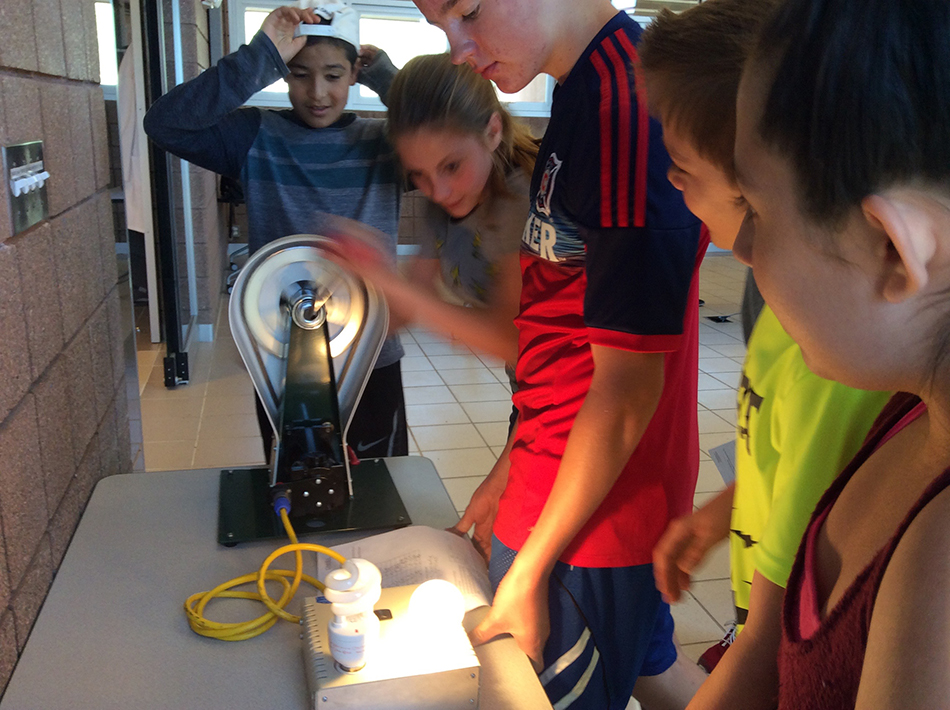
Conclusions
The nature of programs such as Earth Explorers require them to be flexible rather than fixed; there is no recipe. While this context keeps the work fresh and innovative, it also places an additional burden on everyone involved. The program has its challenges, including how to effectively quantify outcomes, but qualitative findings from all stakeholder groups are promising for considering strategies to increase student engagement in connected STEM learning.
Recommendations
For STEM providers interested in developing and running programs similar to Earth Explorers, there are several factors to consider.
- For gaining greater insights into closing achievement gaps, focus on qualitative data collection to capture the perspectives of students on the margins.
- Make sure your target age group and demographic finds your idea engaging. Like any kind of well-designed problem-based or project-based learning, the topic needs to be relevant and student-centered.
- Seek out partners who can take on specialized aspects of the project. STEM ecosystems are complex and multilayered, so they really require the participation of stakeholders with complementary skill sets and resources.
- Codevelop a pilot program in collaboration with local partners to try out ideas. Make sure to collect feedback from a range of stakeholders.
- Engage students’ families in the process by developing trust and communicating in the family’s first language. Don’t rely only on email. Texts and phone calls can be highly effective.
- Become a vocal advocate for multiple and overlapping structures and sources of funding to connect in-school and out-of-school learning and closing opportunity gaps.
- Cultivate a strengths-based (versus deficit-based) school climate. In Maton and Hrabowski’s 2004 research on the highly successful practices in place at University of Maryland-Baltimore County (UMBC) to increase diversity among science and engineering PhD students, the authors describe a strengths-based model as one that: “… does not focus on remediating deficiencies, the hallmark of a deficits-based approach. Instead, the program builds on the existing strengths of talented youth [of color] and transforms their academic and social environment.”
- When looking to diversify programs, actively recruit students who shy away from these types of programs through cluster recruiting rather than recruiting individuals one by one. Students describe feeling welcome in the EE program when they see other students “who look like [them]” participating. The National Girls Collaborative refers to this strategy of intentionally increasing representation by a minority population toward a critical mass as a “tipping point” for more a equitable STEM program, a practice to lessen the sense of isolation of minoritized students and/or potential employees and recommended by the National Science Foundation.
- Examine the makeup of your mentors/providers relative to the population you are serving. The goal would be proportional representation. To maximize engagement, students should “see themselves” in at least some of the teachers and mentors.
- Student essential skills such as communication, collaboration, innovation, critical thinking, and empathy, can be developed in concert with technical competencies during connected STEM learning.
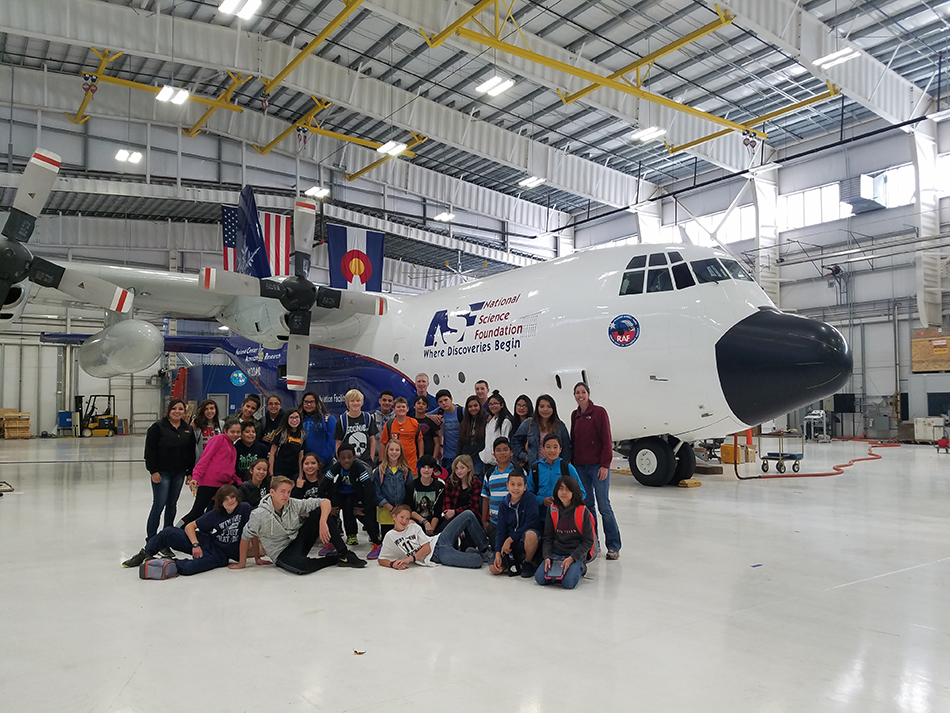
Janelle M. Johnson (jjohn428@msudenver.edu) is assistant professor of STEM education at Metropolitan State University of Denver in Denver, Colorado. Jayme Margolin-Sneider (margo-sneider_jayme@svvsd.org) is a seventh-grade science teacher and Earth/STEM Explorers advisor at Westview Middle School in Longmont, Colorado. Monica Moreno-Martinez (morenomartinz_monica@svvsd.org) is a Spanish and computer science teacher and Earth/STEM Explorers advisor at Westview Middle School in Longmont, Colorado.
Interdisciplinary STEM Technology Middle School Informal Education


